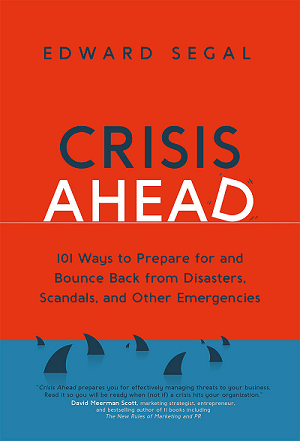Right and Wrong Ways to Recover from the Coronavirus Crisis
Edward Segal, Crisis Management Expert
The decision by some states to begin reopening their economies appears to be based more on hope than science — and could lead to the further spread of COVID-19. Adding to the pressure to return to normal, some workers have staged protests, insisting their governments restart their economies or rescind social distancing mandates. That’s like hospital patients demanding to go home after a major operation before doctors say it is prudent and safe for them to be released.
 Decisions by state governments on when and how the recovery will begin — and how it will be managed — provide important early lessons on the best or worst ways for corporations and organizations to bounce back from this or any crisis.
Decisions by state governments on when and how the recovery will begin — and how it will be managed — provide important early lessons on the best or worst ways for corporations and organizations to bounce back from this or any crisis.
Know the full scope of the crisis. With only one percent of the US population tested for COVID-19, it is simply impossible for anyone to know how many people have been exposed to the virus, are infected, or where they are located. Facing continued shortages of tests and personnel to administer and process them, there is no telling when scientists will be able to have a true and accurate picture of the nature of the disease.
Confirm the crisis is over. The number of confirmed cases of the coronavirus continue to rise — as do the deaths associated with the disease. According to health officials, it could be a year or more until an effective vaccine is available.
Ensure the crisis does not return. Given what we don’t know about the disease or when, how or if it will reoccur makes it difficult to reopen the economy with any level of confidence. Hoping a crisis will not repeat itself is never a good or effective strategy.
Follow the advice of the right experts. Business executives and political leaders may be experts in many things, but they are not scientists or hold medical degrees. It’s always best to solicit and follow the advice of the people who know what they are talking about.
Set the right tone and direction. Those at the top of any organization chart should go the extra distance to ensure that everything they say and do helps resolve the crisis as soon as possible. They should not make matters worse or prolong the crisis.
Be careful in making forecasts or projections. Although forecasting the future is an important part of running a business or organization, any projections about the future of the pandemic should be tempered with the fact that the health and lives of people may be at stake.
Have the right priorities. The driving force to reopen state economies is the desire to re-open businesses and put people back to work. As important as that is, it is even more important that it is absolutely safe do so. Although COVID-19 led to a massive economic crisis it was caused by a disease and should be managed as such. Administering the wrong treatment to a patient or giving them the wrong medicine will not make the patient better — it could only make matters worse.
Learn from the experiences of others. Officials in San Francisco, New York, and Washington DC have been more aggressive in their handling of the crisis. In addition to requiring people to stay home, New York now requires anyone who must go outside for groceries, etc. to wear a mask, and Washington DC has extended their stay at home mandate.
Don’t engage in magical thinking. Just as there is a cause for every crisis, there are logical reasons why and how it will come to an end or it may come back. The reality is that no crisis ever goes away on its own, and bouncing back successfully requires an efficient, effective, and strategic plan.
The bottom line is this: In any crisis, it is important to get back to normal as soon as it is appropriate to do so. In this national public health emergency, people must truly believe it is safe again to leave their homes before they will be confident about going back to work or to their favorite restaurants and stores — no matter how many “we’re open for business” signs they might see.
 About the Author: Edward Segal is a crisis management expert, consultant, and author. His new book on crisis management — Crisis Ahead: 101 Ways to Prepare for and Bounce Back from Disasters, Scandals and Other Emergencies ((Nicholas Brealey) will be released as an ebook April 21 and as a paperback on June 16. They can be ordered at at https://www.amazon.com/gp/aw/d/B0827JK83Q/ref=tmm_kin_title_0?ie=UTF8&qid=&sr=.
About the Author: Edward Segal is a crisis management expert, consultant, and author. His new book on crisis management — Crisis Ahead: 101 Ways to Prepare for and Bounce Back from Disasters, Scandals and Other Emergencies ((Nicholas Brealey) will be released as an ebook April 21 and as a paperback on June 16. They can be ordered at at https://www.amazon.com/gp/aw/d/B0827JK83Q/ref=tmm_kin_title_0?ie=UTF8&qid=&sr=.
For more information visit PublicRelations.com or contact Segal at crisisahead@gmail.com

